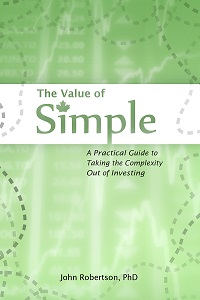Poseidon Concepts PSN
December 1st, 2011 by PotatoIntroduction
Poseidon is a spin-off of Open Range Energy (ONR). PSN leases modular above-ground fluid holding tanks to oil and gas companies for fraccing fluid handling and storage. Their literature indicates several benefits of their approach over traditional methods such as excavating and lining a pit or using multiple tankers. These benefits include cost, full-year access (lighter truck loads for road bans, and no need to dig in the winter), and more efficient heating of frac fluid pools (a simple matter of surface area, combined with insulation).
PSN has exhibited incredible exponential growth over its short history, rapidly outgrowing its parent O&G company. There are many unanswered questions about its business, in large part because it is so new, but also in part because past financials of Open Range Energy were not restated to segregate the Poseidon tank rental business from the O&G business. It looks good, but is it too good to be true?
Overview
PSN has positioned itself to be a small/mid-cap high dividend-paying oil services company (the tank rental business). It has set the initial dividend as a monthly $0.09/share, or $1.08/year, which at today’s price of $11 represents a yield of 9.8%. They project that they will be able to cover that yield from operating EBITDA for full-year 2012, with further growth to come. Growth has been phenomenal, starting from nothing at the beginning of 2010 to $20M in revenue in Q3-2011, with 170 tanks at that point, and a current build rate of ~1 tank/day.
It requires very little in the way of capital, and offers extreme margins and returns (90% operating margin, ~70% RoIC). The company has applied for Canadian and US patents on its tanks, and a provisional Canadian patent has been granted.
Several important questions have not been answered, however:
- How is their technology reviewed by 3rd-party professionals?
- What is the long-term market share they can expect to hold? Long-term margin?
- With such a lucrative business, why is no one else doing it?
- What is the lifetime of a tank, on average? [Update: investor relations says over 10 years, expecting up to 20]
- Why do they pay a dividend?
- Why did they split the company, rather than using PSN’s cash flow to fund ONR’s O&G development, or selling the PSN division to a yield-hungry pension fund?
PSN has negligible book value, so an investment would be predicated on the long-term ability of the business to generate cash (i.e., to pay the dividend).
Financials
Growth: Started with $1.6M of tank rental revenue for Q1+Q2+Q3 of 2010, up to $41M in Q1+Q2+Q3 2011, with over half of that in Q3-2011 alone. 2011 guidance is $55M EBITDA, and $130M for 2012. Growth rate is simply out of this world. The dividends would work out to about $80M in 2012, leaving a projected $50M for capital expenditures from cash flow.
PSN has a $75M credit facility, with $25M drawn, leaving $50M available for capital expenditures (in addition to retained earnings).
Between debt already arranged and cash flow, PSN should be able to spend $100M on new tanks in 2012. Their manufacturing allows for approx. 1 tank to be built per day.
Note that PSN has only ever reported EBITDA figures. No numbers are available for depreciation.
How much does a tank cost?
This is not explicitly stated, however the ballpark would be $350-750k/tank. The release for PSN’s split indicated that PSN had 170 tanks at Sept 30, 2011, and had $60M in assets (substantially all of the assets are anticipated to be tanks). Looking at the capital expenditure statement of consolidated Open Range, capital spending for 2010 + 9 mos 2011 was $127M, over which time they built 170 tanks (and also presumably spent some of the capital budget for the O&G business), so the worst-case is $750k/tank. Closer to $400k/tank is probably most accurate.
Tank Inventory
170 tanks at Sept 30, 2011. 2012 is projected to open with 240 tanks. At $400k/tank, they could build 250 tanks with the available cash and debt lines; at $350k/tank, they could build 285 tanks in 2012. Either way, that is not the maximum output of 365+ tanks we could expect given the current manufacturing run-rate. Which leads to my biggest question:
Why are they paying a dividend?
Dividend-payers are all the rage right now, and indeed PSN only came to my attention because it was a prospective dividend-payer, but why as a shareholder would you ever want to take a dividend when you can reinvest in a business that’s doubling every year and boasting the kind of margins and RoC that PSN offers? Yes, they could still max out their production with additional borrowing, but why? The answer may be related to the next few questions.
What is the long-term outlook and fleet size?
I have no basis for attempting to estimate the long-term margin they will be able to achieve. Competition will almost certainly arrive: so far they have first-mover advantage (the answer to “why isn’t everyone in this business†is likely because it came out of nowhere just 2 years ago), but that won’t last forever. They have a patent, but I have not had a chance to see it for myself, and even then, some non-infringing copy-cat attempts will likely be made.
For fleet size, I ballparked a final fleet size in the 400-500 tank range, which would represent getting tanks associated with something like 10-20% of the fraccing rigs in North America, and with 4-5 tanks per rig required (though the tanks set up quickly, it’s likely that each will be needed at a site for longer than a fraccing rig in order to process the fluids). Again, just ballpark estimations. At the current rate of production, PSN would hit that before the end of 2012, and that (I’m sure more out of coincidence than anything) would mesh up with the capital budget I outlined above. If that is the case, then that may explain why they can pay a dividend: the growth plateau is close.
60% of the current tanks are already leased through to the end of 2012. Some multi-year contracts in place as well. This suggests that demand is still moderately strong.
What is the lifetime of a tank?
The depreciation for PSN has not been broken out in a segregated filing. One quick estimate would be 10 years: somewhat similar to other machinery/autos that are used year-round outdoors with steel components [update: investor relations indicates this is a good guess].
Valuation Scenarios
Let’s attempt then to value PSN under several scenarios.
Assume 2012 goes as forecast by management and ballparked above. Then for 2013 they would have 450 tanks and be in the long-term plateau of company size. Presently, they earn EBITDA of $400k/tank/year. Assume the bank line is fully drawn at $75M with a 5% interest rate, so interest expense is $3.75M/year.
Scenario #1: margins remain lucrative, tanks continue to earn EBITDA of $400k/tank/year, tanks last 10 years.
Scenario #2: margins remain mostly lucrative, but fall a bit, tanks earn EBITDA of $300k/tank/year, tanks last 10 years.
Scenario #3: margins tighten by half, tanks earn EBITDA of $200k/tank/year, tanks last 10 years.
Note that these are all varying degrees of conservative scenarios, there are others (e.g., continued exponential growth through 2013) that offer more upside.
|
2013 |
Scenario #1 |
Scenario #2 |
Scenario #3 |
|
Number of tanks |
450 |
450 |
450 |
|
EBITDA/tank |
$400k |
$300k |
$200k |
|
EBITDA |
$180M |
$135M |
$90M |
|
Interest Exp |
$3.75M |
$3.75M |
$3.75M |
|
Depreciation Exp |
$18M |
$18M |
$18M |
|
Tax rate |
25% |
25% |
25% |
|
Net earnings |
$119M |
$85M |
$51M |
|
Dividends |
$80M |
$80M |
$80M |
|
Payout ratio |
67% of EPS, 44% of EBITDA |
94% of EPS, 60% of EBITDA |
157% of EPS, 88% of EBITDA |
While scenario #1 is reasonably conservative in terms of final market share (with the information currently available), it is not conservative with respect to revenue and margins. The more conservative scenarios in #2 and #3 indicate that the company should be able to pay the dividend in the short term (even in #3, dividend would be covered by EBITDA, though for long-term sustainability, it should be covered by normalized cash EPS).
Risks
There are many sources of risk. Some may give early warning signs allowing one to exit a position, whereas others are unavoidable and must be priced in and accepted. For PSN, these are the risks I’m most concerned with:
- Environmental. The tanks have a short service history (<2 years), and the fleet is expanding extremely rapidly. This means that there must be a lot of newly-trained personnel dealing with these tanks. A leak or full breach of a tank that leads to a spill, especially early in this company’s history, could lead to a total loss from liability damages and damage to reputation. This is a low-probability high-cost type risk.
- Competition. The business has such incredible margins that competitors will be flocking to this space. It is unclear if the patent PSN holds will be enough to protect them, or if the patent will be granted in the US at all.
Conclusion
Unfortunately I can’t come to a firm conclusion about PSN. It looks like a lucrative opportunity with lots of upside if everything goes well (growth, margins). Note that when I tried to estimate some value I tried to stay at least somewhat conservative. There is a whole lot of upside beyond that if everything goes right (high final market share, continuing high margins, etc). However, I’m very skeptical of the company’s ability to maintain that level of return or growth for very long. Given how attractive reinvestment in PSN looks, the fact that management has chosen to pay a dividend, and a high payout at that, should be taken as a signal that the end of the growth curve is near, with a plateau likely to be found in mid-late 2012/early 2013.
Many unanswered questions remain, however a 10+% yield — which would be supported under several reasonably conservative scenarios — may adequately compensate one for taking a position, with the outside chance at truly spectacular returns if the growth rate and pricing power can be maintained for several more years at the current level.
Disclosure: I’m currently long PSN, with what I consider to be a “speculative position” weighting (in English: I like it, but not enough to bet the farm, so it’s only ~2% of the portfolio).


 Questrade: use QPass 356624159378948
Questrade: use QPass 356624159378948 Passiv is a tool that can connect to your Questrade account and make it easier to track and rebalance your portfolio, including the ability to make one-click trades.
Passiv is a tool that can connect to your Questrade account and make it easier to track and rebalance your portfolio, including the ability to make one-click trades.